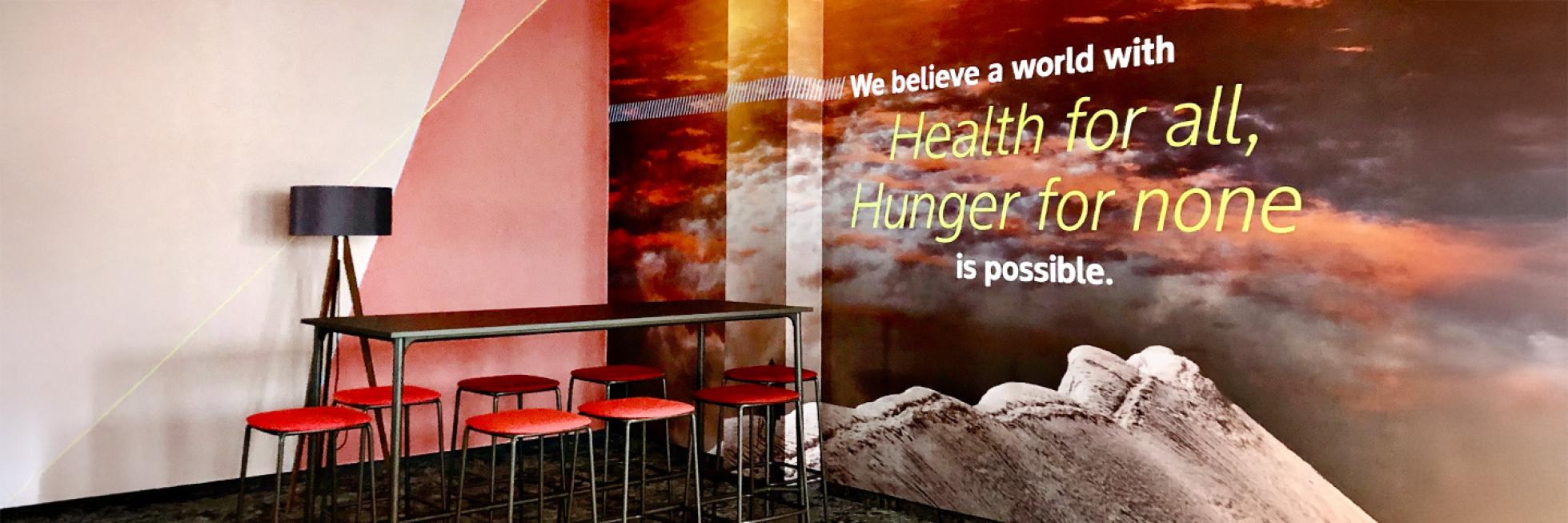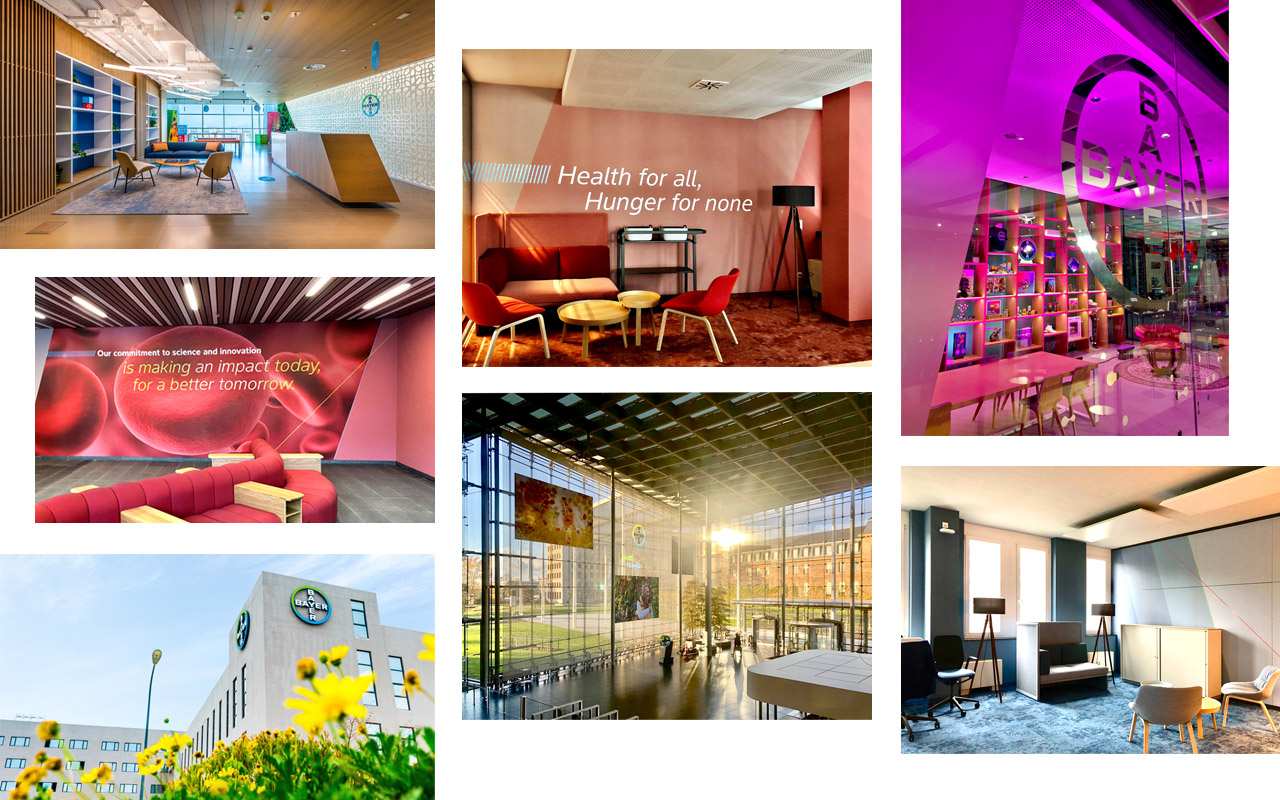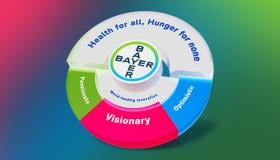Visual Environment

Our visual environment should be a place of encounter in which collaboration is key, and everybody feels welcome, whether a visitor or a #TeamBayer community member.
You are empowered to experience our visionary and energetic spirit through the use of respective brand elements.

We have put together all relevant materials and examples for you in the Visual Environment Folder.
In order to find a specific need more quickly in this comprehensive dashboard, we have also directly linked the following core topics for you …
Visual Examples - to give some information of how to implement.
Reallife Examples - with pictures of country projects as
Wallpaper Motives - with high resolution pictures from Bayer Mediapool, reflecting our main company messages.
Main Messages - that can be added to the wallpaper motives.
Bayer Brand Screen - a ready to use visual content tool, illustrating our Mission „Health for all, Hunger for none“.
3D Bayer Unit - as an iconic landmark for #TeamBayer and its visitors. ( drawings, color codes, pictures)
Brandstore – as a resource or inspiration for Brand Ambassador items.
Outdoor Branding – Outdoor branding communicates overarching brand messages to a broad stakeholder group on key touchpoints
As #TeamBayer can also learn from your examples, it would be great to share these also with us.
If you have any further questions about this or any other section of Bayer Identity Net, please contact:





